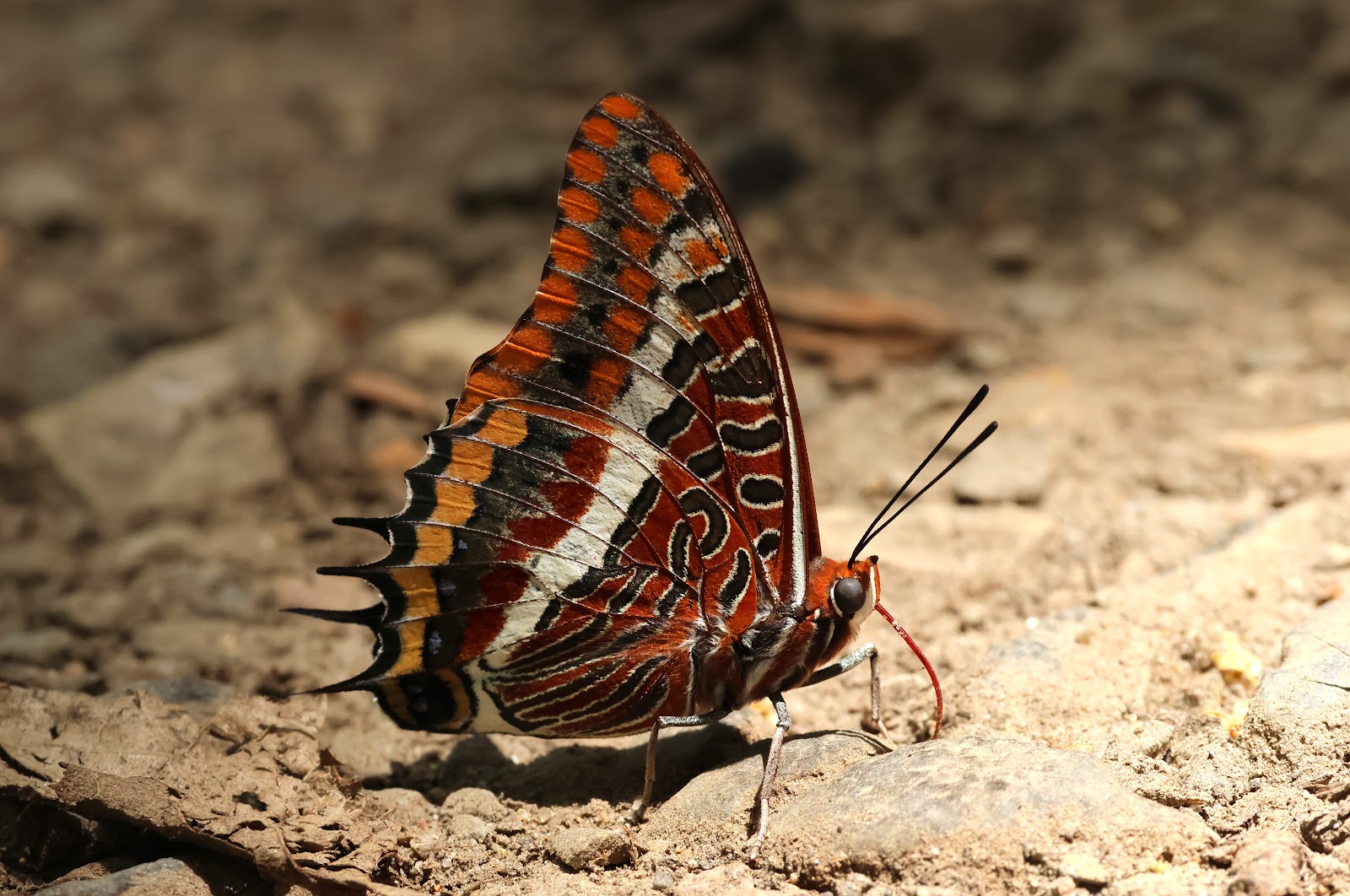On my previous trip to Spain, I ended up seeing about 60 species of butterflies. I was surprised to find that I was still able to recognize a few. Once Paul arrived, we spent 20-30 minutes or so at both Monfrague and the Sierra de Gredos to photograph cooperative butterflies.
At Monfrague, the main highlights were Two-tailed Pashas and an abundance of hairstreaks. We also saw a number of Spanish Gatekeepers and a couple of Cleopatras, although the later eluded the camera. Unfortunately, on closer inspection, the hairstreaks all seemed to be just the same two species.
I then found another butterfly that looked rather like a Common Snout, a species that occurs in America. We saw several of these and they turned out to be Nettle Tree Butterfly, which is in the same sub-family as the Common Snout.
In the Sierra de Gredos, a brief birding spot at a somewhat lower altitude morphed into a butterfly photography session. Unfortunately a boleria (e.g. Pearl-bordered or similar) fritillary eluded the camera and we didn't bother with the Clouded Yellow-types, given how hard identification is, even from photographs.
Long-tailed Blue (by Paul Thompson)








Comments
Post a Comment